IT Infrastructure
We can supply, install, maintain and support equipment and infrastructure to meet all your IT needs.
Servers
Your IT infrastructure will probably contain servers. Servers can have many functions which include web servers, domain servers, database servers, file servers, mail servers etc. ez-pc install, configure and support a wide range of premium brand servers. Learn more about servers at Wikipedia.
There are five main choices when it comes to choosing the type of server you need to fulfil your requirements:
- Tower server
- Rack server
- Blade server
- Virtual server
- Cloud based server
Single or multiple tower servers
Tower servers can seem dated and look more like desktop units than servers, but these servers can still serve a purpose. Generally speaking, if you need a lot of servers, you will probably not use tower servers. They can take up a lot of space and are tough to physically manage since you can’t easily stack them on one another. In some cases, as businesses grow and move to rack servers, conversion kits can be purchased to turn a tower server into a rack‑mounted server. This depends upon the age of the original server and can sometimes be more cost‑effective to replace the old servers when they reach the end of their life cycle.
As implied, smaller environments are probably more likely to use tower servers. Although you might find them used in larger organisations. For example, they can be useful as a branch office server. Even massive organisations use tower servers as part of their IT infrastructure.
Additionally, cabling can become really messy, especially if you have a lot of network adapters and other I/O needs.
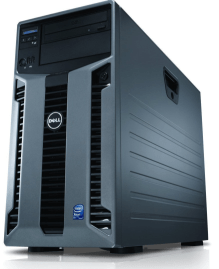
Rack mounted servers
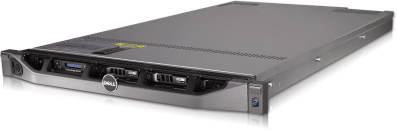
Rack mounted servers
If you run a business of any reasonable size, you will probably want to use rack servers. These are industry standard sized 19″ servers. You will need a rack or cabinet to permanently mount rack servers. The sizing of rack servers uses a measurement known as “U”. 1U is one single 1.75″ rack unit. They can take up varying amounts of space in the rack from 1U to 8U Generally, the larger the server, the more expansion opportunities are available.
Rack servers are extremely common and make their home inside these racks along with other critical datacentre equipment such as:
- Switches
- Storage arrays
- UPS (uninterruptable power supplies or backup battery units)
Rack servers make it easy to keep things neat and orderly since most racks include cable management of some kind. However, you still need a lot of cabling to make everything work.
A KVM device is often needed to manage rack servers.
Rack servers are very expandable. Some include space for 12 or more disks right in the chassis. They can also support four or more processors, each with multiple cores. In addition, many rack servers support huge amounts of RAM, so these devices can be computing powerhouses.
Blade servers
A blade server is a stripped down server in a modular design optimised to minimize the use of physical space and energy.
A standard rack mounted server can function with (minimally) a power cord and network cable. Blade servers have many components removed to save space, minimise power consumption and other considerations but they still have the main functional components.
Blade enclosures
Unlike a rack mounted server, a blade server needs an enclosure. An enclosure, can hold multiple blade servers. It provides services such as power, cooling, networking, various interconnects and management. Together, blades and the blade enclosure form a blade system.
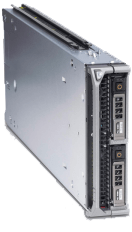
Originally, buying individual blade servers could mean trading expansion possibilities for compactness. Although this is still true to some extent, today’s blade servers can be quite powerful.
There is still some truth to the fact that blade servers have expansion challenges when compared to the tower or rack‑based options. For example, most tower servers have pretty significant expansion options (expansion slots, disk drives etc.). Many blade servers are limited to two to four internal hard drives, although organisations that use blade servers are likely to have shared storage of some kind backing the blade system.
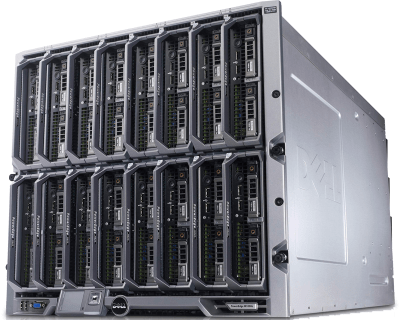
Furthermore, the lack of expansion slots limits the Input/Output expansion options of blade servers. Some blade servers have PCI or PCI‑E expansion slots. For most, however, specially designed expansion cards such as multiple Gigabit Ethernet adapters, Fibre Channel adapters, etc. are used to achieve expansion.
When raw computing power and server density is the key driver, blade servers meet the need. For example, you can easily fit a 10U blade chassis into a rack that can support up to 16 servers. So, each server uses the equivalent of 0.625U of rack space. The blade chassis might have inbuilt gigabit Ethernet switches, Fibre Channel switches, KVM device etc. so there is additional rack space savings since there is no need to rack mount these devices to support different connectivity and management options.
Blade environment
A blade environment handles connectivity internally so you will end up with a neater server room because there is much less cabling than tower or rack environments.
Adding a new server consists of simply sliding it into an available slot in the chassis. There is no need to rack a new server and deal with mountings, new cabling etc.
The combination of this small size and high density makes heat dissipation a challenge. Blade chassis can put out a lot of heat so ideally, the server room should be air‑conditioned.
From a cost perspective, blade servers require some initial infrastructure, such as the chassis, so the upfront cost is often higher than for servers of other types.
Virtual servers
A virtual server is actually software that emulates an operating system environment that is on one of the hardware servers mentioned above. Virtual servers have increasingly become an important part of the IT infrastructure of nearly all organistions. It doesn’t actually exist as a piece of hardware in its own right. To implement virtual servers, you need at least one medium to high‑end hardware server. The server should be capable of running multiple instances of virtual servers. Frequently, the hardware server that is running the virtual server(s) is known as the host and the virtual server is known as the guest. The virtual server imitates dedicated hardware and the end‑user or client software has the same experience accessing a virtual server as they would if accessing dedicated hardware.
Using virtual technology allows an organisation to implement multiple servers to suit their needs without the physical space penalty often associated with that. A well‑planned environment using virtual servers is usually more cost‑efficient than using dedicated hardware.
Cloud-based servers
Cloud-based computing uses the virtualisation technology mentioned above. It is experiencing exponential growth, with companies of all sizes adapting to this new technology. Industry experts believe that this trend will only continue to grow and develop even further in the coming years. As with virtual servers, cloud‑based servers have increasingly become an important part of the IT infrastructure of nearly all organistions. While cloud computing is undoubtedly beneficial for mid‑size to large companies, it is not without its downsides, especially for smaller businesses.
If used properly and to the extent necessary, working with servers and data in the cloud can vastly benefit all types of businesses.
Storing information in the cloud gives you almost unlimited storage and computing capacity. Cloud‑based servers are highly scalable so you can start off with one or more small severs, add more processors, disk space or additional servers as you need, you can even have some servers off in out of hours periods to reduce costs.
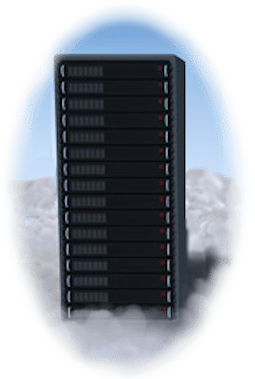
Cloud-based servers can be anywhere
Sited in data warehouses around the globe, cloud‑based servers offer the ultimate in fault tolerance. As businesses grow, they become an integral part of any IT infrastructure. Backups and restores of cloud‑based servers is relatively much easier than storing the same on a physical device. Ultimate protection and ease of disaster recovery is provided by storing backups in different physical locations.
You can access data from anywhere an Internet connection is available using cloud‑based servers. This convenient feature lets you move beyond time zone and geographic location issues.
Deploying cloud‑based servers can be relatively quick compared to deploying physical servers. Of course, the amount of time taken here will depend on the exact kind of technology that you need for your business.
In spite of its many benefits mentioned above, deploying cloud‑based servers may not necessarily be the solution for everyone as there can also be some disadvantages. For example, if you opt for a cloud only solution and for any reason you have no internet connection (office internet connection goes down, mobile based connection and there is no signal), you will have no access to the servers or the data contained upon them. In any event, you will need a very good Internet connection to be access the server at all times.
Storage solutions
Raid arrays
RAID is an acronym for Redundant Array of Independent Disks. This is a data storage technology that combines multiple disk drives into one or more logical units for the purposes of data redundancy or performance improvement. Data is spread across the drives in one of several ways depending upon the design goal. RAID is a cost‑effective solution often used for providing fault tolerance on servers to negate the effect of a single disk failure. RAID arrays can be mounted physically in a server and are part of the computer subsystem or they can be housed in a separate unit, either standalone or rack mounted.
NAS
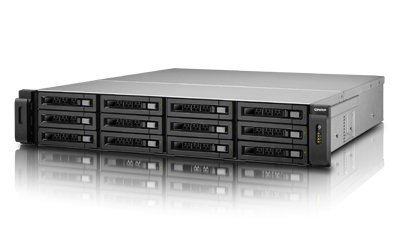
NAS
NAS is an acronym for Network Attached Storage. This is a file storage device that is accessed through a network allowing multiple systems to access the same data. Investment is protected with NAS solutions as more NAS appliances can be added to the network as required. A NAS device can be either standalone or rack mounted.
These devices are in fact usually just another computer on your network with their own processor(s), memory and a purpose‑built operating system that has the dedicated function of storing and supplying vast amounts of data. They frequently have multiple network ports (Gigabit or 10 Gigabit), SSD cache acceleration and almost limitless expansion capacity.

